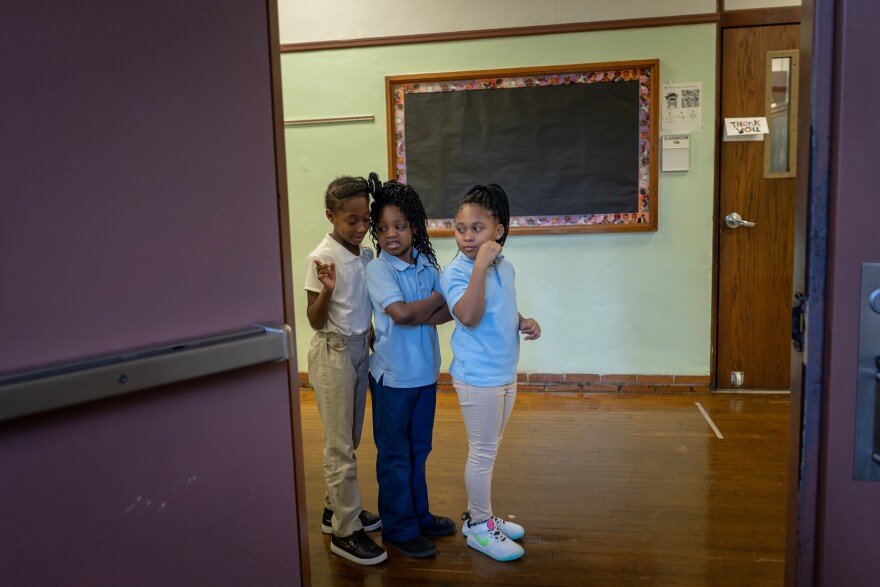St. Louis Public Schools will begin to welcome students back into the classroom starting Monday.
Pre-K through 2nd grade will return first, followed by students in the 3rd through 6th grades on Oct. 26. Those parents who don’t want to send their kids in-person can continue with virtual instruction, according to the district.
“The alignment of virtual and in-person schedules is challenging,” said SLPS Superintendent Kelvin Adams at the school board’s meeting Tuesday evening. “But it is important and can be worked out.”
Students can expect mandatory masks, small cohorts, less recess and dismissal will start one hour early.
For teachers, the picture becomes less clear.
Some teachers will be designated to just in-person instruction or just online. For those who have to teach students in the classroom and online at the same time, there are lots of logistical questions surrounding how they can interact with both groups.
The teachers’ union and the district are still trying to figure out the best way to manage the new, simultaneous learning environments.
“I know the clock is ticking,” said Ray Cummings, president of SLPS Teachers’ Union. “We have until Monday in order to get this done. If we have to work late hours, or whatever we have to do, in order to make sure that we can open safe.”
There is a general desire among parents for students to return.
Of the 6,000 pre-K to 2nd grade student families the district polled, 62% said they wanted in-person learning. But from school-to-school the numbers vary, with Gateway Michael Elementary School voting to come back at 34%, while Peabody Elementary School had the highest rate at 83%.
There was no poll done for teachers on whether or not they wanted to return. The district did ask for feedback, but not an explicit up or down vote on coming back to school.
And for some parents, teachers are a central piece of deciding to send their students back.
“I’m concerned about our teachers,” said Rachel Grand, an SLPS parent of a 4th grader at Mallinckrodt Academy of Gifted Instruction. “I’m concerned about us losing staff, I’m obviously concerned about their health. And that I think is the biggest issue for me, just supporting them.”
Grand said until the information coming from the district gets clearer, she doesn’t plan on sending her daughter back to school.
At the school board meeting, Dr. Adams said that all teachers will receive PPE kits and additional money will be spent on custodial services. But some details received pushback, like the possibility of teachers not having lunch breaks until the end of the day, as students will be mostly confined to their classrooms during lunch.
How the district will staff classrooms if a teacher gets sick also presented a wide range of variables.
SLPS is not the first district to attemptin-person learning this fall--some St. Louis County districts began the process last month.
The county said younger students, as opposed to their middle and high school counterparts, represented a much smaller fraction of coronavirus cases. They also appear to have a smaller risk of suffering from severe complications of COVID-19.
But, even while less common, research has shown that younger kids can catch and spread coronavirus without showing symptoms.
Emily Hubbard has four children enrolled in SLPS. She said she’s not sure about sending her kids back yet, not just because of the district’s policies, but the lack of a statewide mandate on masks and other mitigation tactics.
“If I could get a feeling that the populace as a whole was buying into best practices, then it would be a lot easier to send my kids back out into the mix,” she said.
Both Dr. Adams and union officials emphasized that the situation remains fluid. It’s impossible to know with certainty what the coming weeks will look like.
“I continue to remind people the virus is in control,” said Cummings, “We can have the best laid plans of men and women, but the virus doesn’t respect plans.”




